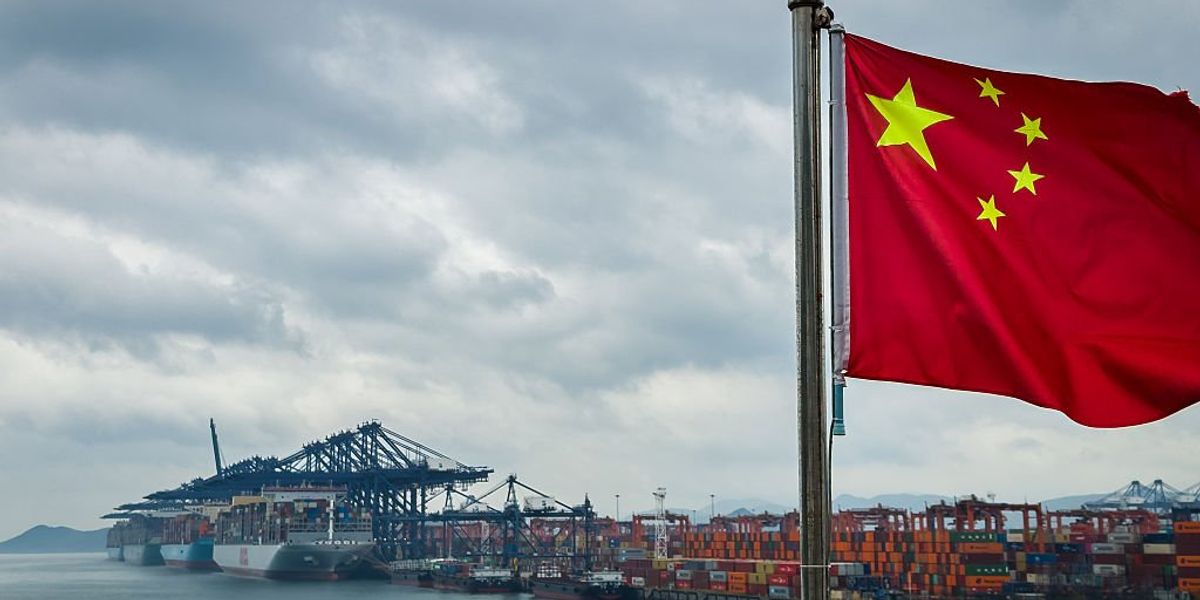
President Trump last week announced a deal in principle with China: The U.S. will impose 55% tariffs on Chinese goods, while China will respond with a 10% tariff on American goods. In return, China will continue supplying rare earth minerals and magnets, and Chinese students will keep attending American universities. The deal’s finer details remain in flux.

Noticeably absent from the agreement? Any commitment from China to protect American intellectual property. That’s no accident. China denies stealing American IP altogether, chalking up clear examples of theft to normal “market behavior.”
Trump is the first president in half a century to take trade seriously. But tariffs alone won’t fix this.
And in a way, they’re right. IP theft is normal in China. Some of the country’s most successful firms, like Huawei, were built on stolen American technology. For the Chinese Communist Party, theft isn’t an embarrassment. It’s a strategy.
The great Chinese rip-off
In 1983, much of China was still preindustrial. No engines, no tractors, no cars. Labor happened by hand or with the help of animals. Rural China looked a lot like colonial America.
But in just a few decades, China transformed into an industrial superpower. It now produces three times more industrial output than the U.S., including 24 times more steel and far more oceangoing ships. It has the world’s largest economy by purchasing power.
How did they do it? Theft.
RELATED: Without tariffs, the US is defenseless in an economic war
 Moor Studio via iStock/Getty Images
Moor Studio via iStock/Getty Images
A 2024 House Homeland Security Committee report estimates that China steals between $300 billion and $600 billion in American IP annually. A 2017 report from the Commission on the Theft of American Intellectual Property drew similar conclusions. If we use a midpoint estimate and track the losses back to 2001 — when China joined the World Trade Organization — America has lost nearly $10 trillion in intellectual property to China.
China gets this technology in several ways. First, through direct espionage. Only 29% of these operations target military secrets. The rest focus on industrial and commercial tech: manufacturing methods, chemical formulas, blueprints. Espionage alone accounts for roughly $180 billion in losses each year.
Second, through counterfeiting. According to the Organisation for Economic Co-operation and Development, 60% of all counterfeit goods sold worldwide come from China. In the U.S., that number rises to 87%. Counterfeiting costs U.S. businesses up to $291 billion per year.
Third, through piracy on Chinese e-commerce platforms. The United States Trade Representative reports that American rights-holders lose billions thanks to widespread digital theft of films, music, software, books, and branded products. Of the $2.16 trillion in Chinese e-commerce sales in 2024, roughly 40% were pirated or counterfeit. That’s $864 billion in lost profits — just last year.
Americans deserve to benefit from their own labor and ingenuity. But China continues to loot our IP with impunity, and our leaders let it happen.
The golden goose gets gutted
Beyond outright theft, China siphons off American technology through strategic corporate acquisitions and forced technology transfers.
The U.S. runs a trade deficit with China of more than $300 billion annually. To cover it, we sell assets — ownership stakes in American companies. Chinese investors target U.S. tech and industrial firms, acquire shares, then funnel proprietary information back to China. Once the intellectual property is transferred, they sell off their holdings.
Technically legal. Strategically disastrous.
China also compels U.S. companies to “partner” with Chinese firms when setting up operations inside the country. The Chinese side runs daily operations and learns the ropes. In exchange, Americans share their tech. Eventually, the Chinese copy the technology, replicate the products, and compete directly with the very companies that taught them.
That’s how Huawei rose to prominence. The company reverse-engineered American products, then used its home-field advantage to grow into the world’s third-largest smartphone maker.
China’s strategy works. And American businesses, addicted to short-term profits, keep falling for it. The consequences aren’t just economic — they’re geopolitical. This is how the CCP turned a rural backwater into a peer competitor.
Trump is the first president in half a century to take trade seriously. But tariffs alone won’t fix this. As I argue in my book “Reshore,” the only way to win this fight is to bring America’s factories home. Reshoring means economic independence. It also cuts off China’s access to the technology they’ve been stealing for decades.
Until then, we’re funding our own decline.

